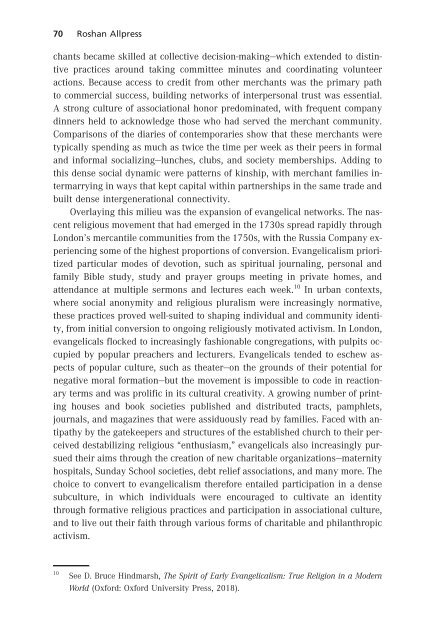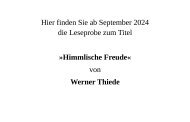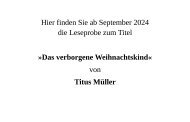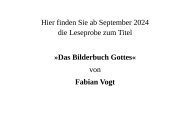Piet Naudé | Michael Welker | John Witte, Jr. (Eds.): The Impact of Political Economy (Leseprobe)
In our late modern pluralistic societies, there are tensions and complementarities between a plurality of individual and social claims and activities to shape societal life and a constructive pluralism of what is known as social systems. The latter provide normative codes and powers emanating from the areas of law, religion, the family, the market, the media, education, academic research, health care, defense and politics. A better understanding and steering of this complex division of powers is crucial for the common good and for freedom and peace. In this volume, a multi-disciplinary team of experts from Germany, Italy, Australia, the UK, the USA, and South Africa bring their conceptual, empirical and historical insights to bear in three broad sections: »The moral dimension of social systems«; »The interaction of religion, law and education with political systems«; and »The moral (mal)-formation evident in case studies on the global financial crisis and social media«.
In our late modern pluralistic societies, there are tensions and complementarities between a plurality of individual and social claims and activities to shape societal life and a constructive pluralism of what is known as social systems. The latter provide normative codes and powers emanating from the areas of law, religion, the family, the market, the media, education, academic research, health care, defense and politics. A better understanding and steering of this complex division of powers is crucial for the common good and for freedom and peace.
In this volume, a multi-disciplinary team of experts from Germany, Italy, Australia, the UK, the USA, and South Africa bring their conceptual, empirical and historical insights to bear in three broad sections: »The moral dimension of social systems«; »The interaction of religion, law and education with political systems«; and »The moral (mal)-formation evident in case studies on the global financial crisis and social media«.
Create successful ePaper yourself
Turn your PDF publications into a flip-book with our unique Google optimized e-Paper software.
70 Roshan Allpress<br />
chants became skilled at collective decision-making—which extended todistintive<br />
practices around taking committee minutes and coordinating volunteer<br />
actions. Because access to credit from other merchants was the primary path<br />
to commercial success, building networks <strong>of</strong> interpersonal trust was essential.<br />
Astrong culture <strong>of</strong>associational honor predominated, with frequent company<br />
dinners held to acknowledge those who had served the merchant community.<br />
Comparisons <strong>of</strong> the diaries <strong>of</strong>contemporaries show that these merchants were<br />
typically spending as much as twice the time per week as their peers in formal<br />
and informal socializing—lunches, clubs, and society memberships. Adding to<br />
this dense social dynamic were patterns <strong>of</strong>kinship, with merchant families intermarrying<br />
in ways that kept capital within partnershipsinthe same trade and<br />
built dense intergenerational connectivity.<br />
Overlaying this milieu was the expansion <strong>of</strong> evangelical networks. <strong>The</strong> nascent<br />
religious movement that had emerged in the 1730s spread rapidly through<br />
London’smercantile communities from the 1750s, with the RussiaCompany experiencing<br />
some <strong>of</strong> the highest proportions <strong>of</strong> conversion. Evangelicalism prioritized<br />
particular modes <strong>of</strong> devotion, such as spiritual journaling, personal and<br />
family Bible study, study and prayer groups meeting in private homes, and<br />
attendance atmultiple sermons and lectures each week. 10 In urban contexts,<br />
where social anonymity and religious pluralism were increasingly normative,<br />
these practices proved well-suited to shaping individual and community identity,<br />
from initial conversion to ongoing religiously motivatedactivism. In London,<br />
evangelicals flocked to increasingly fashionable congregations, with pulpits occupied<br />
by popular preachers and lecturers. Evangelicals tended to eschew aspects<br />
<strong>of</strong> popular culture, such as theater—on the grounds <strong>of</strong>their potential for<br />
negative moral formation—but the movement is impossible to code in reactionary<br />
terms and was prolific in its cultural creativity. Agrowing number <strong>of</strong> printing<br />
houses and book societies published and distributed tracts, pamphlets,<br />
journals, and magazines that were assiduously read by families. Faced with antipathy<br />
by the gatekeepers and structures <strong>of</strong>the established church to their perceived<br />
destabilizing religious “enthusiasm,” evangelicals also increasingly pursued<br />
their aims through the creation <strong>of</strong> new charitable organizations—maternity<br />
hospitals, Sunday School societies, debt relief associations, and many more. <strong>The</strong><br />
choice to convert to evangelicalism therefore entailed participation in adense<br />
subculture, in which individuals were encouraged to cultivate an identity<br />
through formative religious practices and participation in associational culture,<br />
and to live out their faith through various forms <strong>of</strong> charitable and philanthropic<br />
activism.<br />
10<br />
See D. Bruce Hindmarsh, <strong>The</strong> Spirit <strong>of</strong> Early Evangelicalism: True Religion in aModern<br />
World (Oxford: Oxford University Press, 2018).
















